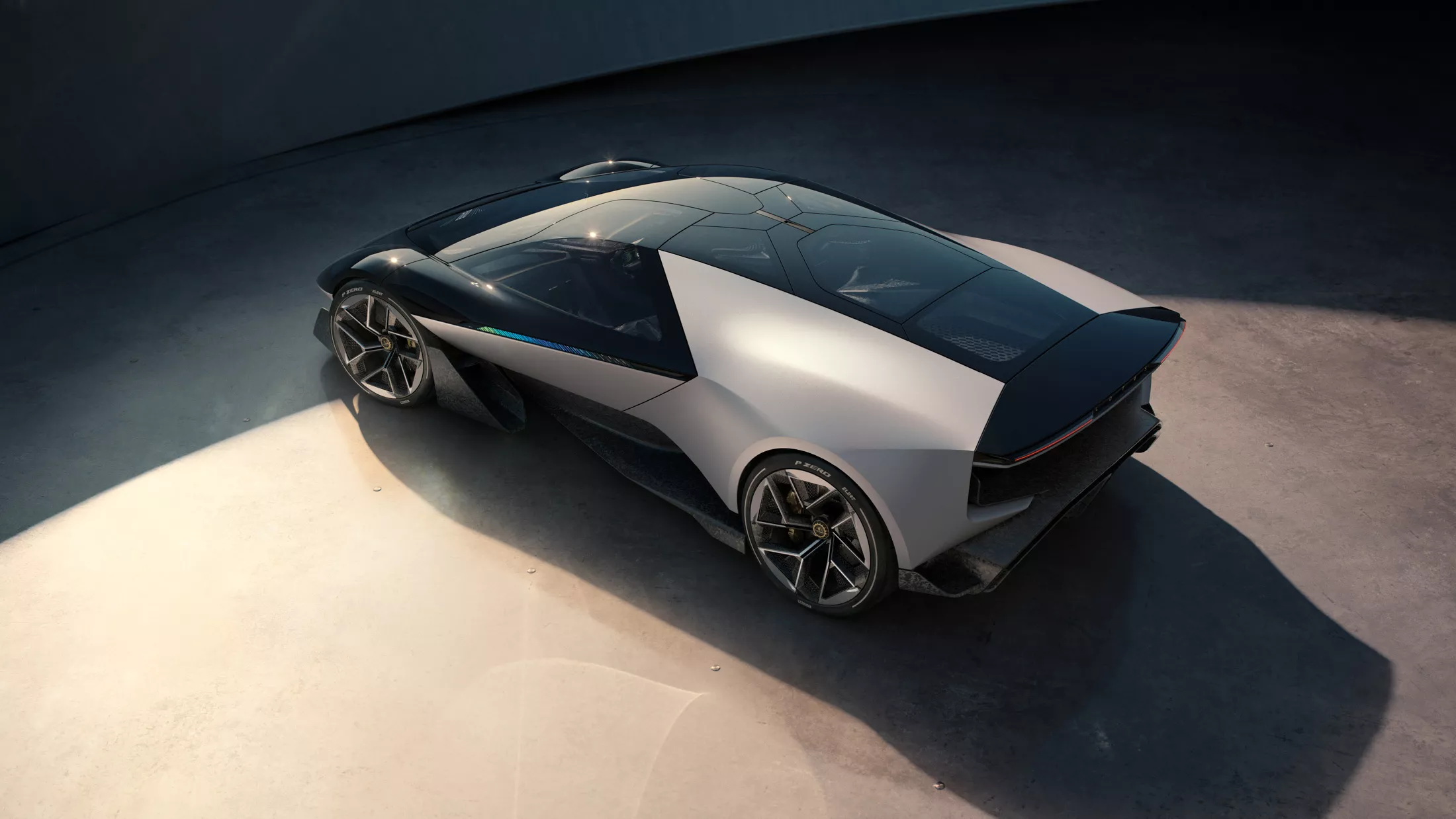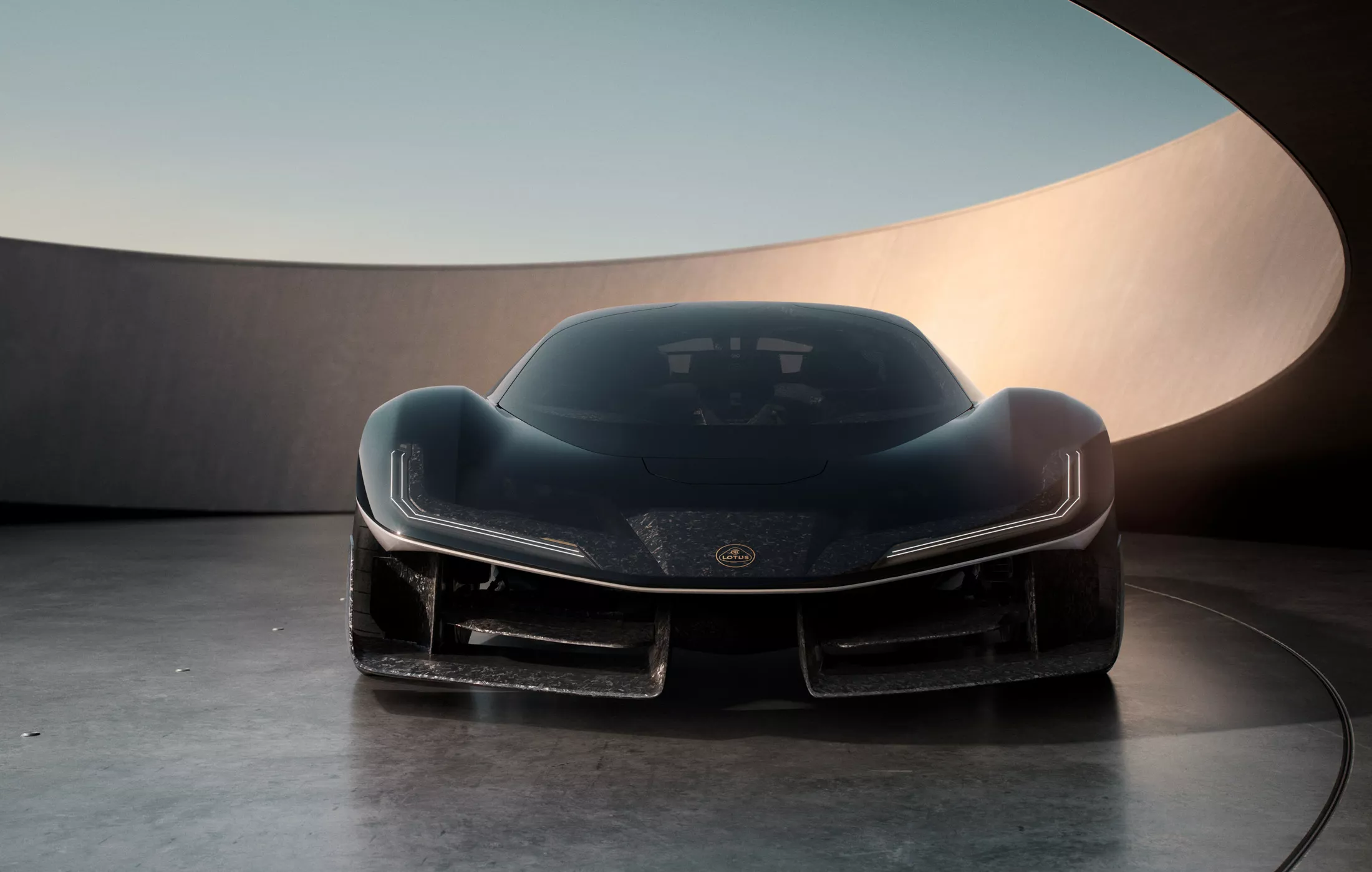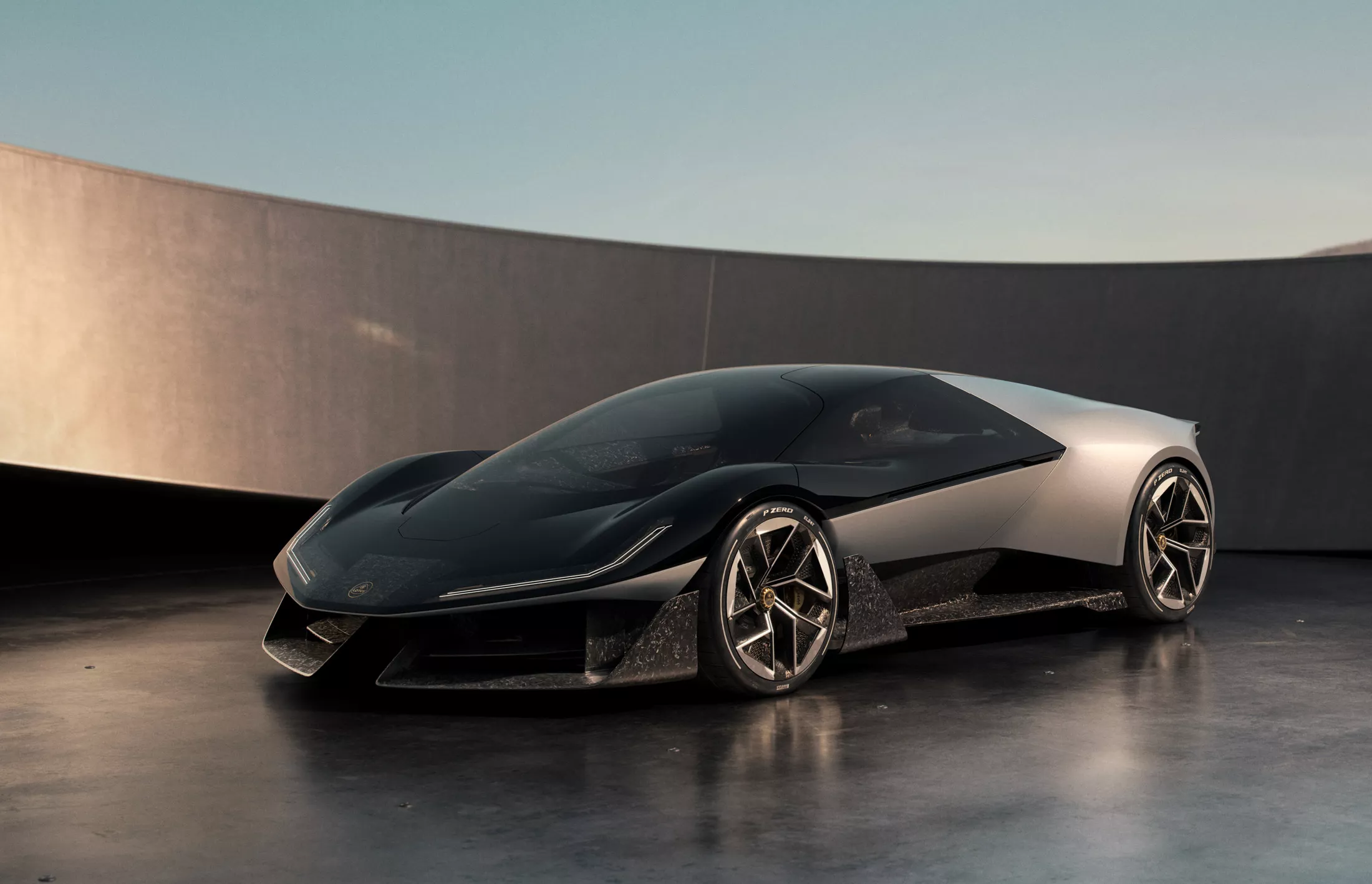Lotus Theory 1 Concept Brings McLaren F1 Vibes, Modern Tech, And Electric Performance

by AutoExpert | 17 September, 2024
The Lotus Theory 1 concept you see here provides some major clues about what the future of Chinese-British sports cars could look like. This electric supercar features a three-seat layout, similar to what you’d find in the McLaren F1, with the driver positioned centrally.
Under the hood, it’s packing a dual-motor all-wheel-drive system that cranks out 986 horsepower. Lotus claims it’ll get from 0 to 62 mph in under 2.5 seconds, with a top speed of 199 mph. If you’re driving it more conservatively, the 70 kWh battery should give you a range of 250 miles.

To keep the weight down, the Theory 1 uses a carbon fiber body, helping it stay under 3,520 lbs (1,600 kg). There’s also plenty of exposed carbon fiber, both inside and outside, which—along with the butterfly doors—makes for a pretty striking visual package.
It’s leaner and more refined than the larger Evija, and it’s clear that Lotus designers took inspiration from the 1977 S1 Esprit when crafting the curves.

Though Lotus hasn’t officially named it an Esprit, you could easily imagine this car wearing that badge, and it wouldn’t be a surprise if many of the ideas from this concept make their way into a supercar you might actually be able to buy in a few years.
Future models could incorporate Lotuswear, a high-tech system, in collaboration with Motorskins. This adaptive textile-covered robotic system offers haptic feedback through the seat and steering wheel, with small inflatable pods that could pulse to tell the driver when to make a turn or act as buttons for various functions.

On the tech front, another intriguing feature is the steer-by-wire system. This gives drivers the ability to adjust the steering ratio and feel, though it’s worth noting that it’s all virtual. Some Lotus purists, accustomed to the direct and raw feedback of cars like the Elise, may find this concerning, and it may require some adjustment.
But for those who appreciate customization and fine-tuning, it could be a game changer. On a more traditional note, Lotus has brought back a piece of its classic engineering by using the motor and battery assembly as stressed members capable of absorbing forces directly from the suspension, much like the Lotus 49 F1 car’s V8 engine did in the 1960s.

It’s a clever nod to the brand’s engineering roots, blending old-school ideas with modern technology. Pirelli P Zero Elect tires, designed to reduce rolling resistance and improve range by up to 10 percent, are also present in Theory 1.
The Lotus Eletre SUV and the Emeya four-door coupe already feature these tires—two models that, despite bearing the Lotus badge, may not align with the brand's core identity for some enthusiasts. However, Theory 1 feels different.


















